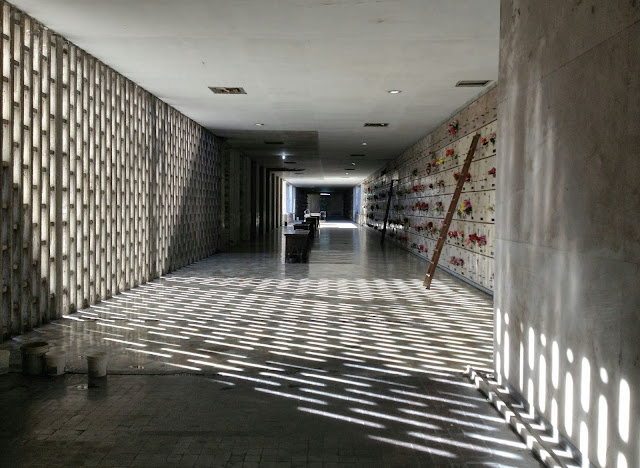For me that first day after a red-eye flight is always pretty much a dead loss. This time, the one thing I did manage to do that day (after having gotten more or less moved into my temporary apartment) was change some money.
Money in Argentina is weird right now. The official exchange rate for the dollar
hovers around 5.5 pesos per US$. The
actual street exchange rate for US cash, however, is called the “dólar blue,”
and fluctuates from 7.5 pesos to 9.5 pesos.
This exchange is technically illegal but apparently everyone does it. So Americans are advised to bring in as much US cash as
they plan to spend, and find an illicit way to exchange it at the blue
rate.
So on that first hazy day, with only dollars in my pocket, I asked the landlady for a place to exchange them. I assumed she’d point me to a legal cambio—I figured I
could eat the official rate for the first hundred dollars. But she looked at me carefully, and wrote
down the name of a street, and two cross streets. She told me it was near the very fancy mall
she was proud the apartment was in walking distance of. So I walked about 12 min from my seedy hood
to a much fancier one and down this very fancy-feeling little street. It felt just like a side street in central
Paris. A fancy little florist, dry cleaner, old-school shoe repair shop, but no cambio. She hadn’t given me a street number. So I continued on to the fancy mall, paid with a card for a disorienting fancy food court lunch,
and prepared to head back to the apartment to somehow solve the problem. I thought, I’ll take the same street on the
way back just in case. I walked
slowly. As I passed an elegant doorway,
a gentleman was coming out, and through the doorway I caught over my shoulder
an elegant glassed-in lobby with foreign bills mounted on the glass. I turned back. I buzzed, and got buzzed in. A beautifully dressed middle-aged woman asked me, “Sí?” and I said “Cambio?”
and she escorted me inside and said to have a seat.
The room looked just like a bank in that it was blandly decorated and had two
of those windows at the back, except that the walls were bare. When it was my turn I went to the window and
asked what the exchange rate was for dollars.
The lady punched a number into a calculator and turned it towards
me. It was much more than the official rate, just slightly less than the day’s
blue rate.
I gave her $200 and she gave me pesos. I strolled out.
I don’t think I would be exaggerating to
describe my mood on the walk home as jubilant.
Rockstar king of the world. At the
end of the day, usually there are illicit things, and there are glamorous
things, and these things don’t go together because illicit things tend to feel
seedy. (That’s part of how we get people
to not do them, right?) And you know who lives where illicit things are also totally glamorous? James effing Bond, that’s
who.










































